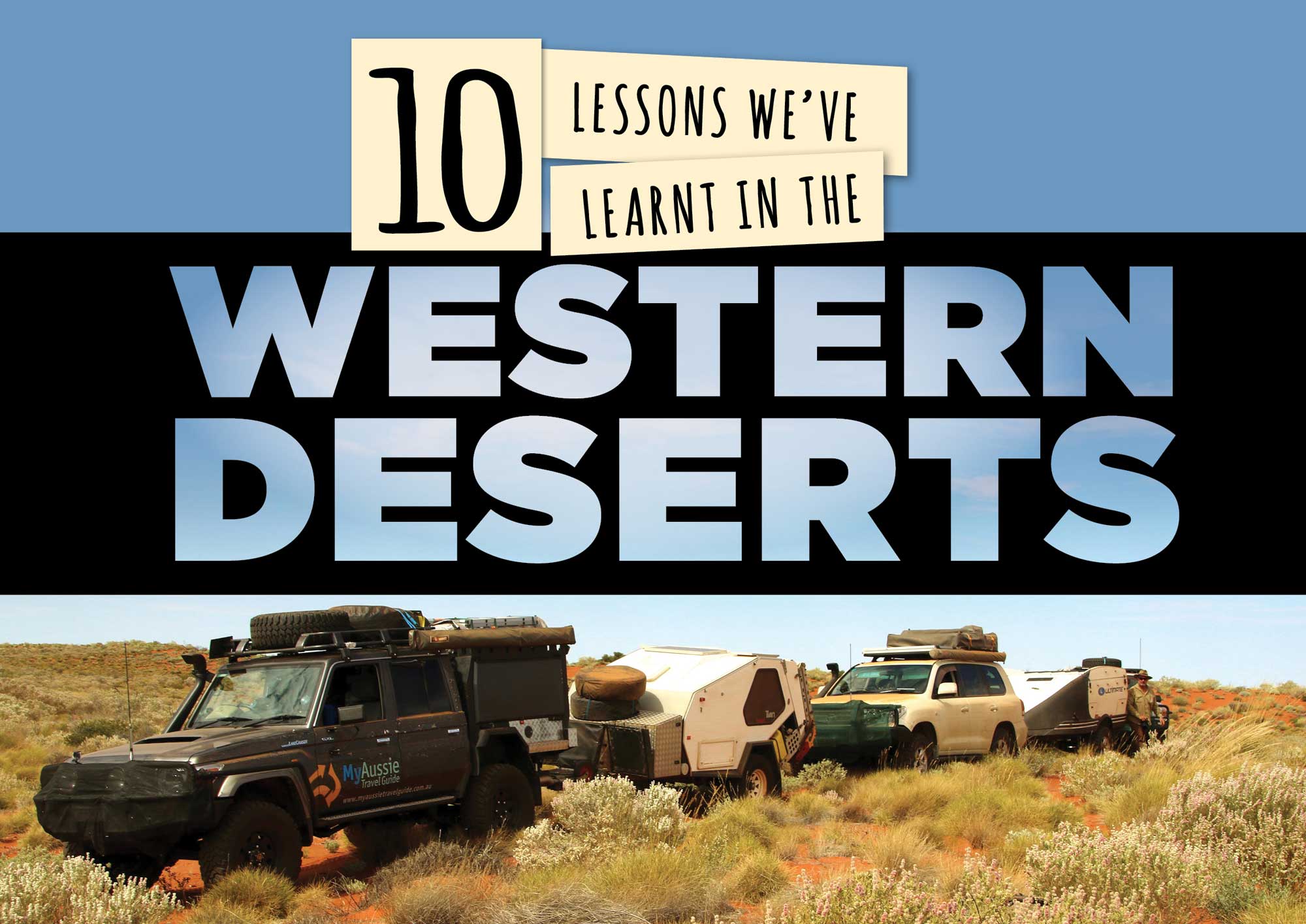WA has some of the most beautiful, and deadly, remote touring on the planet, here’s how to avoid the pitfalls
Whenever we head off on a trip, it’s only natural we do some prep with our setup to make sure we have the best and safest time we can while we’re out on the tracks. This is no different when visiting WA’s western desert region – but it needs to be ramped up a few notches for a trip like this. Even with hours of research and prep, we still found that we didn’t have things quite right on that first visit… so we learnt plenty of lessons and we continue to learn. Here’s just some of what we’ve picked up over the years.
- ALLOW PLENTY OF TIME
Getting to these desert regions from SA was a few days’ drive on what can be some very corrugated and challenging dirt roads at times. Even then, that just got us to the edge of the desert. To cross it, there was another 800km of slow-going tracks. So we needed to reset the kilometres per hour clock and the number of kilometres we expected to do in a day. Our perception of the distance we’d cover in a day soon had a reality check, as it was slow progress crossing the desert.
- OBTAINING PERMITS TAKES TIME
Our research showed a significant amount of land in the area is under native title, so we had to obtain permission beforehand. We ended up needing multiple permits (some were free, some weren’t); but more frustratingly, these don’t come from a one-stop shop. After spending time looking for where to find them, and then applying for them, the turnaround took anywhere from a couple of minutes online to a week or longer. Thankfully we also travelled with the permits – as we were pulled over and checked on our way through SA’s APY Lands.
- CAREFULLY CALCULATE YOUR FUEL
We knew we’d be crazy to travel into the deserts without having at least an auxiliary tank, or some additional jerry cans; so we travelled with both. Fuel consumption calculations had to be very accurate, as we knew it wasn’t that easy to get additional fuel close by. So we erred on the side of caution and double-checked, even triple-checked, each day. A fuel drop was arranged for a specific drop point which we organised six weeks before taking off on our trip – and it helped. Otherwise we’d have been forced back into civilisation to refuel. We carried a pump to transfer the fuel from the 200L drum. We also filtered the fuel when transferring it into the vehicle.
- HAVE A SELF-RECOVERY MINDSET
It wasn’t rocket science that a trip to such a remote area comes with risks… so we knew it wasn’t the place to be practicing any heroic 4X4 stunts. We spent ages on our preparation for our first trip to make sure we covered a range of scenarios in case things went pear-shaped, and we took the approach to ‘take no risks’ while travelling. We knew the deserts can be unforgiving at the best of times, so we put together a couple of alternative plans (that could be kicked in if needed) as backups before leaving home.
- TYRES GET HAMMERED
It doesn’t matter what profile, type, age or compound your tyres are, we found it’s the unexpected stakes that lurk in sandy hollows that will – without doubt – eventually find their way into a tyre one day. Generally, they’re thick and strong as crowbars; and pointy and sharp as arrowheads. We travelled with tyre-sensing monitors and were ready to fly into plug repair mode in an instant if needed. We’ve learnt to travel with good-quality tyre repair equipment as well, as we’ve found the cheap overseas imitations don’t cut the mustard.
- LEARN HOW TO CHANGE A TYRE
On that note, if you’re a regular desert traveller it’s just a matter of time before you’ll need to remove a tyre to repair it. We’re not talking plugs here, but patches. It can be quite disconcerting if you’re going through your spare tyres as quick as you can throw down a coldie, hence this point is pretty important. We practiced our patching technique beforehand at home, so when push came to shove we could do it in the deserts if required.
- WATER WILL SAVE YOUR LIFE
Water is precious at any time, but moreso in the deserts. Simply put, we carried plenty of water and used it wisely. We generally like to travel with multiple containers scattered around the vehicle and camper in case one container lets go. We label containers ‘A Water’ (which is suitable for drinking) and ‘B Water’ (the quality is not so good, so we use it for washing, cleaning, etc). Whenever we came across a water collection point, we took the time to fill up our containers because it could be a long while before finding more water.
- SPINIFEX HURTS
It’s not the easiest stuff to avoid in the deserts when you’re out walking or doing a recovery, and we learnt this lesson the hard way. It didn’t matter whether we’d covered up with long pants, the needles still got through clothing and embedded in our skin. So now we wouldn’t even think about travelling without a set of long gaiters. But there is a flipside – spinifex looks really good early in the morning or later in the day for photography; and it makes a great fire starter. As it burns really quickly and very hot, clearing the campfire area first is a must.
- HOW TO CROSS SAND DUNES
We knew if we could stick to visible tracks, we would be travelling where many have trod before us. That worked well in places as others have already put in the hard yards to find the best ways around the big sand hills. We found that many tracks changed direction, sometimes as much as 180 degrees – where we found ourselves travelling between dunes called ‘swales’ for a kilometre or more, before the track turned and went over the dune (a ‘gate’). This is where we found tyre pressures and traction aids important. We weren’t afraid to use the traction aids often, where necessary, to prevent digging holes into the tracks.
- THE DESERTS ARE ALIVE
Did you know that the western desert region has more bio-diversity than the Amazon? It’s well worth the time taken to experience it first-hand. We came across some gnamma holes (natural water sources in rock cavities) which are used by birds and animals, but at times they can fill up with dirt and crud. So we took the time to clean them out to help keep these soaks alive with fresh water. Another lesson we learnt was to leave a stick partially submerged in the water, as it can make all the difference for birds and small wildlife. They use the stick to perch on to drink, rather than taking the risk of falling in and drowning.










